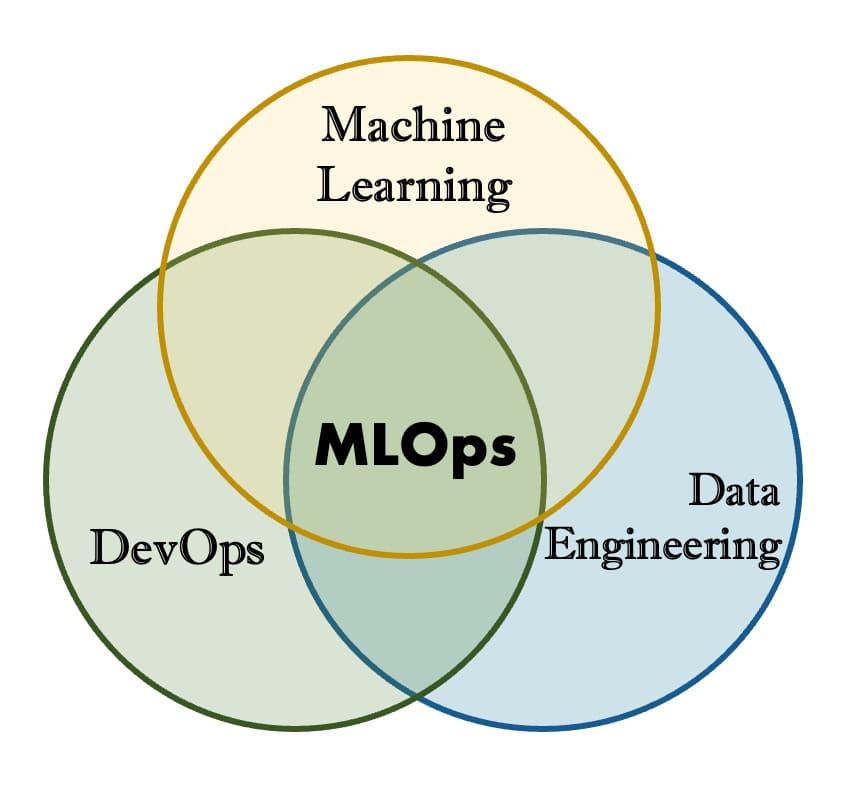What is MLOps? Why MLOps? Explained in simple words
What is MLOps? Who can become MLOps? Why MLOps?

In this article we will understand what is MLOps, who can become MLOps and why MLOps? I will try to explain MLOps as simple as possible.
Understanding MLOps
So as the name says MLOps, which mean Machine Learning Operations, is an extension of Devops. So whatever a Devops engineer do with the traditional applications, MLOps also do the same thing but with the ML models.
In short, MLOps combines principles from DevOps with the unique requirements of machine learning. The goal of MLOps is to enhance collaboration between data scientists and operations teams, ensuring that machine learning models are not only built effectively but also maintained and improved over time.
In SDLC, there are multiple stages such as defining the requirement, designing the app, development, building the app, testing, deploying, monitoring etc. Whenever a developer works on a new feature, he/she have to go through the stages of SDLC. If devops is not involved, each stage is a manual effort on its own. What a devops does is automate each stage to increase SDLC efficiency and accuracy.
Similarly, there is SDLC for models (I consider models as a software) and MLOps engineer automates model development life cycle.
MLOps is Devops but for the ML models
Day to day life of MLOps Engineer
The day-to-day life of MLOps engineer is very much similar to a Devops engineer.
| DevOps | MLOps |
|---|---|
| Write CI CD pipeline for the software | Also writes CI CD pipeline for ML models |
| DevOps create and manages the infrastructure for the software | Also creates and manages the infrastructure for the ML models |
| Works on the cost optimisation | ML operations are a little expensive so cost optimisation is really needed here. |
In simple words i can say that MLOps is but for the ML models.
Who can become a MLOps Engineer?
As a Devops already know the culture of automating SDLC, so I think the best person to become a MLOps engineer would be a Devops Engineer. If you are not a Devops engineer, what can you do? Answer is start with Devops. Why I say so? Because starting with MLOps can be difficult. Some of the tools in Devops and MLOps also remain the same. For example, Terraform, Ansible, Kubernetes etc. Having knowledge of data science is not mandatory, but it really helps and a big plus.
A beginner guide to MLOps
The Machine Learning Lifecycle
The lifecycle of a machine learning model involves several stages, including data collection, model training, validation, deployment, and monitoring. Each stage requires specific tools and processes to ensure that the model performs as expected in real-world scenarios.
Key Components of MLOps
A beginner’s guide to MLOps would typically highlight key components such as version control for datasets and models, automated testing frameworks, and monitoring systems that track model performance over time. These components are essential for ensuring that machine learning models are reliable, efficient, and effective.
The Importance of Collaboration
MLOps is not just about technology; it’s also about people. Collaboration among cross-functional teams, including data scientists, software engineers, and IT operations personnel, is crucial for success. By fostering a culture of collaboration and continuous improvement, organizations can leverage MLOps to enhance their machine learning initiatives and drive business value.
Some popular MLOps tools in market
Several popular MLOps (Machine Learning Operations) tools are widely used in the industry to streamline the deployment, monitoring, and management of machine learning models. Here are some of the notable ones:
- MLflow: An open-source platform that helps manage the ML lifecycle, including experimentation, reproducibility, and deployment.
- Kubeflow: A Kubernetes-native platform designed to facilitate the development, orchestration, deployment, and running of scalable and portable ML workloads.
- TensorFlow Extended (TFX): A production-ready machine learning platform that provides a set of tools and libraries for deploying TensorFlow models.
- DVC (Data Version Control): A version control system for machine learning projects that helps manage datasets and models alongside code.
- Weights & Biases: A tool for tracking experiments, visualizing metrics, and collaborating on machine learning projects.
- Seldon Core: An open-source platform for deploying machine learning models on Kubernetes, allowing for easy scaling and management.
- Airflow: While primarily a workflow orchestration tool, Apache Airflow is often used in MLOps for managing complex ML pipelines.
- DataRobot: An automated machine learning platform that provides tools for building, deploying, and managing machine learning models.
- Neptune.ai: A metadata store for MLOps that helps track experiments, visualize results, and collaborate with teams.
- Triton Inference Server: A tool from NVIDIA that simplifies the deployment of AI models in production, supporting multiple frameworks and providing high-performance inference.
- H2O.ai: An open-source platform that provides tools for building and deploying machine learning models, with a focus on automated machine learning (AutoML).
- Amazon SageMaker: A fully managed service from AWS that provides tools for building, training, and deploying machine learning models at scale.
- Azure Machine Learning: A cloud-based service from Microsoft that provides a comprehensive suite of tools for building, training, and deploying machine learning models.
- Google AI Platform: A suite of tools and services from Google Cloud for building, training, and deploying machine learning models.
These tools cater to various aspects of the MLOps lifecycle, including data management, model training, deployment, monitoring, and collaboration, making it easier for teams to manage their machine learning workflows effectively.

Add comment
@name